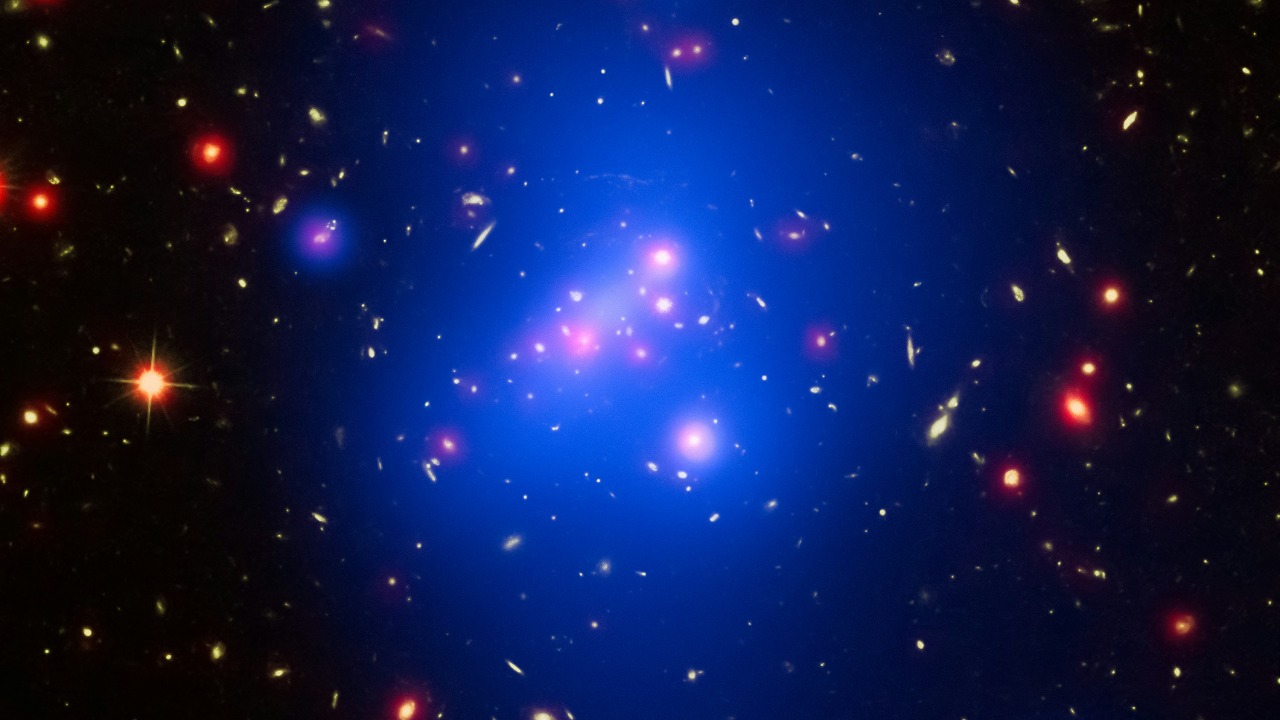
Recent scientific proposals suggest that dark matter, the elusive substance comprising much of the universe’s mass, might not be entirely “dark” as it could interact with light by leaving detectable red and blue “fingerprints,” potentially allowing for new ways to observe it. This theory, highlighted in reports from mid-October 2025, posits that dark matter may impart a measurable red or blue tint on passing light, challenging traditional views of its invisibility. Such fingerprints could stem from subtle interactions, offering astronomers a novel detection method without relying solely on gravitational effects.
Understanding the Enigma of Dark Matter
Dark matter has long been a mysterious component of the universe, inferred primarily through its gravitational effects on visible matter. Traditionally, it has been thought to avoid direct interaction with electromagnetic radiation, such as light, which is why new theories suggesting otherwise are groundbreaking. Scientists have been puzzled by dark matter’s “dark” nature for decades, as it comprises about 85% of the universe’s matter, yet remains undetected through direct means. This has led to ongoing searches for any non-gravitational signatures that might reveal its presence.
The publication of initial ideas on this topic in early October 2025 marks a significant milestone in the field of astrophysics. These emerging theories propose that dark matter might not be entirely invisible, as previously thought, but could interact with light in ways that leave detectable traces. This development is timely, as researchers continue to explore new methods to detect dark matter beyond its gravitational influence (Phys.org).
Emerging Theory: Dark Matter’s Potential Light Interaction
The core proposal of this new theory is that dark matter could subtly alter the color of light, producing a “red or blue tint” as a measurable effect from particle interactions. This concept reframes dark matter not as completely invisible but as capable of leaving indirect traces on photons. Recent theoretical models, supported by quantum and astrophysical simulations, suggest that these interactions might occur through specific mechanisms like photon scattering (AZO Quantum).
Scientists suggest that these interactions could provide a new way to observe dark matter, potentially revolutionizing our understanding of the universe. By examining how dark matter might leave a “fingerprint” on light, researchers are opening up new avenues for detection that do not rely solely on gravitational effects. This “not-so-dark matter” concept challenges the traditional view of dark matter as completely non-interactive with electromagnetic forces (Space.com).
The ‘Fingerprint’ Signature on Light
The red and blue “fingerprints” refer to color shifts in light spectra caused by dark matter’s potential electromagnetic coupling. These shifts could be observed in distant galaxies or cosmic microwave background data, providing a unique identifier for dark matter’s presence. For instance, wavelength alterations detectable by telescopes could serve as a distinct signature of dark matter, offering a new method for astronomers to identify and study this elusive substance (Interesting Engineering).
Scientific analyses from mid-October 2025 propose that dark matter might leave a “fingerprint” on light, emphasizing the precision needed for such detections. These findings suggest that with the right observational tools, such as advanced telescopes, scientists could potentially detect these subtle color shifts, providing a new way to study dark matter’s properties and interactions (Bioengineer.org).
Implications for Astronomy and Detection
Identifying these light-based fingerprints could revolutionize dark matter hunts, enabling tests with existing observatories like the James Webb Space Telescope without the need for new particle colliders. This approach could significantly advance our understanding of dark matter by providing a new method for its detection, potentially validating or challenging current theories about its nature and behavior. However, distinguishing these signals from other astrophysical phenomena remains a challenge, requiring refined models to predict the strength of these tints (Phys.org).
The broader impacts of these findings could include the validation of dark matter theories over alternatives like modified gravity. The initial theory publications in October 2025 have sparked further research collaborations, as scientists work to refine their models and develop new observational techniques. By providing a new method to study dark matter, these theories could lead to significant advancements in our understanding of the universe and its fundamental components.